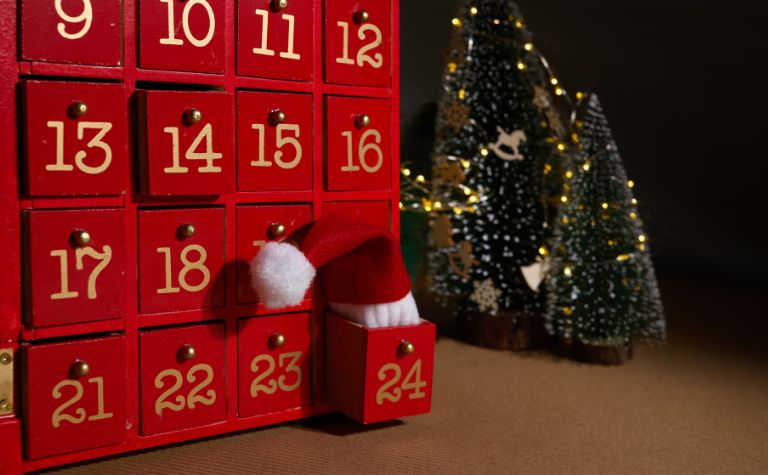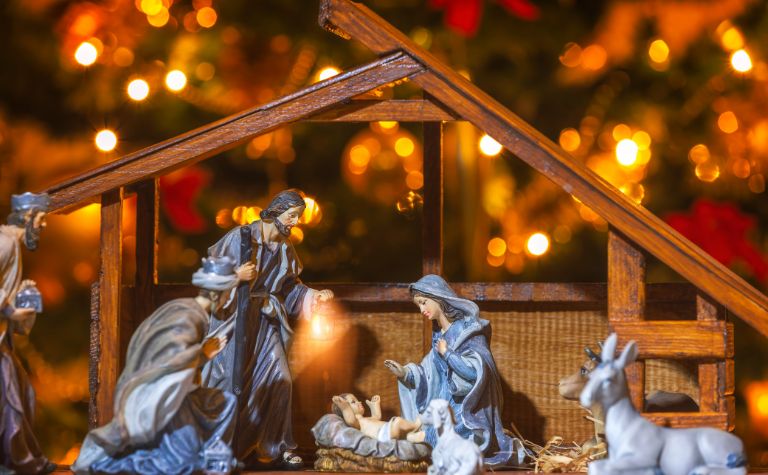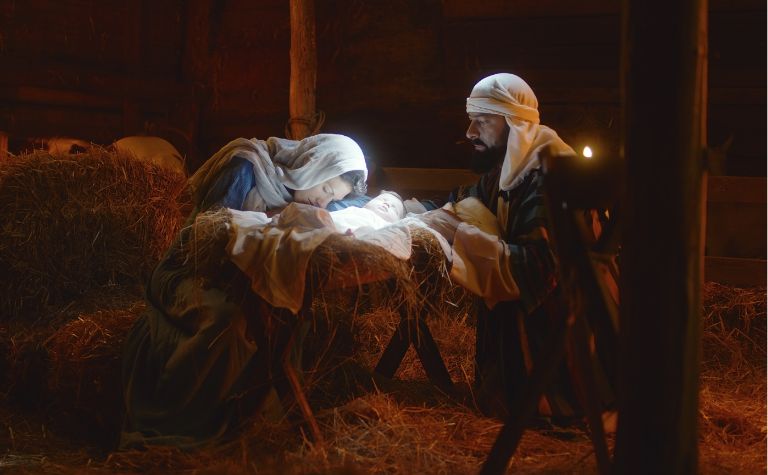As the Christmas season approaches, many families look forward to the traditions that make this time of year so special.
One such tradition that has captured the hearts of both young and old is the Advent calendar. But what exactly is an Advent calendar, and how does it work?
If you’ve ever found yourself pondering these questions, you’re in the right place.
Whether you’re interested in buying one for the first time, creating your own, or simply learning more about this beloved Christmas custom, this article aims to be your go-to resource.

How to Use an Advent Calendar
Using an Advent calendar is a straightforward yet delightful way to count down the days until Christmas.
Basic Guidelines
- Start Date: The countdown typically begins on December 1st and continues until Christmas Eve or Christmas Day, depending on the calendar.
- Daily Ritual: Each day, open the corresponding door or window to reveal what’s hidden inside. This could be a small gift, a quote, or a picture.
- Time of Day: Choose a specific time each day to open the calendar, whether it’s first thing in the morning or as a family activity after dinner.
Family Traditions
Incorporating the Advent calendar into your family’s Christmas traditions can make the experience even more special. Here are some ideas:
- Story Time: If your calendar includes quotes or Bible verses, take a moment to read and discuss them together.
- Activity-Based: Some families opt for calendars that include small activities or challenges, like baking cookies or watching a Christmas movie. This adds an interactive element to the countdown.
- Gift-Giving: If your calendar contains small gifts, consider letting children take turns opening the doors. It’s a great way to teach sharing and patience.
Making It Interactive
To make the experience more engaging, consider these creative twists:
- Personalized Notes: If you have a DIY calendar, include personalized notes or jokes for each day.
- Reverse Advent Calendar: Instead of receiving, consider giving. Place a non-perishable food item into a box each day and donate it to a food bank on Christmas Eve.
- Virtual Countdown: If family members are spread out, consider using a virtual Advent calendar app that everyone can access.
Special Considerations
- Allergies: If you’re using a food-based calendar, be mindful of allergies, especially if it’s a group activity.
- Pets: Believe it or not, there are Advent calendars designed for pets. Just make sure the treats are pet-friendly!
Using an Advent calendar is a simple yet impactful way to build anticipation and add joy to the Christmas season.

Historical Background
The tradition of the Advent calendar has deep roots, tracing its origins back to 19th-century Germany.
Understanding its history not only enriches the experience but also connects us to the generations who have participated in this festive countdown before us.
The German Origin
The concept of counting down to Christmas began as a simple practice among German Lutherans.
Families would mark the days of Advent, either by drawing chalk lines on a door or lighting candles, as a way to build anticipation for Christmas Day.
Over time, this practice evolved into more elaborate methods of counting down, eventually leading to the creation of the first printed Advent calendars.
The First Printed Calendars
The first known printed Advent calendar dates back to the early 1900s.
Created by Gerhard Lang, it featured 24 colored pictures that were attached to a piece of cardboard.
Lang was inspired by a calendar he had received as a child with 24 small candies attached to it.
His printed version was a hit, and it wasn’t long before the concept spread beyond Germany.
Evolution and Commercialization
As the years passed, the Advent calendar began to gain international popularity, especially after World War II.
The design also evolved, adding small doors or windows to hide chocolates, toys, or messages.
This commercialization transformed the Advent calendar into a popular Christmas product in various themes and styles.
Modern-Day Variations
Today, Advent calendars come in a multitude of forms, ranging from traditional paper calendars with biblical images to modern versions filled with beauty products, toys, or even gourmet food.
The essence of the Advent calendar, however, remains the same: to provide a daily dose of joy and anticipation in the lead-up to Christmas.

Types of Advent Calendars
Advent calendars come in various shapes, sizes, and themes, each offering a unique way to count down to Christmas.
Traditional Paper Calendars
- Structure: These calendars are usually made of paper or cardboard and feature 24 or 25 small doors or windows.
- Content: Behind each door, you’ll typically find a biblical or winter-themed picture, a Bible verse, or a small piece of chocolate.
- Popularity: These are the most widely available and are often sold in grocery stores, bookstores, and gift shops.
Chocolate Calendars
- Structure: Similar to traditional paper calendars but with a tasty twist.
- Content: Each window conceals a small piece of chocolate, offering a sweet treat as you count down to Christmas.
- Popularity: These are especially popular with children and are readily available in many stores during the Christmas season.
Toy-Filled Calendars
- Structure: Usually made of sturdier materials like plastic or wood.
- Content: These calendars contain small toys or trinkets behind each door, ranging from miniature cars to LEGO figures.
- Brands: Popular brands like LEGO, Playmobil, and Barbie often release their own versions.
Beauty Advent Calendars
- Structure: Typically more luxurious in design, often resembling a small chest of drawers.
- Content: Each compartment contains a beauty product, such as a lipstick, a sample of perfume, or a skincare item.
- Target Audience: These are popular among adults and are often produced by high-end beauty brands.
DIY Calendars
- Structure: Handmade, using materials like fabric, wood, or even repurposed items like egg cartons.
- Content: You can fill these with personalized gifts, notes, or activities, making the experience truly unique.
- Creativity: These offer the most room for personalization and creativity, making them a popular choice for crafty individuals.
Specialty Calendars
- Structure and Content: These are niche calendars catering to specific interests, such as tea lovers, pet owners, or even wine connoisseurs.
- Availability: Usually found online or in specialty stores.
The Significance of Advent Calendars
Advent calendars are more than just a festive countdown to Christmas; they hold a special place in many households, symbolizing the joy and anticipation that define the Christmas season.
But what makes them so significant?
Cultural Importance
Advent calendars have become a global phenomenon, transcending their German origins to become a staple in Christmas celebrations around the world.
They are featured in various forms of media, from Christmas movies to children’s books, further cementing their place in popular culture.
Christian Significance
For those who observe the Christian faith, the Advent calendar serves as a tool to prepare for the celebration of the birth of Jesus Christ.
The daily act of opening a window can be accompanied by reading a Bible verse or saying a prayer, making it a spiritual exercise as well as a fun activity.
Educational Value
Advent calendars can also serve an educational purpose, especially for children.
They can be used to teach numbers, the concept of time, and even historical or biblical facts related to the Christmas season.
Some calendars come with accompanying booklets or apps that provide additional information and context for each day’s reveal.
Emotional and Psychological Impact
The simple act of opening a door each day to reveal a small surprise brings a sense of joy and wonder that resonates with people of all ages.
For children, it’s a magical experience that builds anticipation for Christmas.
For adults, it often evokes a sense of nostalgia, reminding them of their own childhoods.
Building Family Bonds
Using an Advent calendar can become a cherished family tradition, offering a daily moment of togetherness during the busy Christmas season.
Whether it’s the excitement of revealing a small toy or the quiet reflection of reading a meaningful quote, these shared experiences strengthen family bonds.
DIY Advent Calendars
Creating your own Advent calendar can be a rewarding experience that adds a personal touch to your Christmas celebrations.
Not only does it allow you to customize the content, but it also offers a fun and engaging project for the whole family.
Here’s a step-by-step guide on how to make your own DIY Advent calendar.
Planning and Design
- Choose a Theme: Decide on a theme that resonates with your family. It could be anything from a winter wonderland to a storybook adventure.
- Sketch a Layout: Plan out how your calendar will look. Will it hang on the wall, sit on a shelf, or perhaps be a series of small boxes?
Gathering Materials
- Basic Supplies: Depending on your design, you’ll need materials like cardboard, fabric, small boxes, or even Mason jars.
- Decorative Items: Gather items like ribbons, stickers, or paint to decorate your calendar.
Assembling the Calendar
- Prepare the Base: Create the main structure of your calendar using your chosen materials. Make sure it’s sturdy enough to hold the items you plan to include.
- Add Compartments: Attach small boxes, envelopes, or fabric pouches to hold the daily surprises. Ensure they are securely fastened.
Filling the Calendar
- Personalized Gifts: Fill each compartment with small gifts that you know will delight the recipient. This could be small toys, candies, or even handwritten notes.
- Activity Cards: Consider adding cards with fun activities or challenges for each day, like “Bake cookies” or “Watch a Christmas movie.”
Final Touches
- Numbering: Clearly number each compartment from 1 to 24 or 25, depending on how long you want the countdown to be.
- Decorate: Add the final decorative touches to make your calendar visually appealing.
Safety Precautions
- If small children will be using the calendar, make sure all items are non-toxic and not a choking hazard.
- Ensure that the calendar is securely hung or placed to prevent it from falling.
Creating a DIY Advent calendar is a wonderful way to add a personalized touch to your Christmas celebrations.
Related Questions
Joseph, the husband of Mary and the earthly father of Jesus Christ, is depicted in the Gospels as humble, law-abiding, and obedient. In many Christmas scenes, such as in displays of the manger, he is...
The virgin Mary, the mother of Jesus, is one of the most fascinating people in the Bible. For 2,000 years, people of different eras and cultures have marveled at her faith in God. Mary's story in the...
